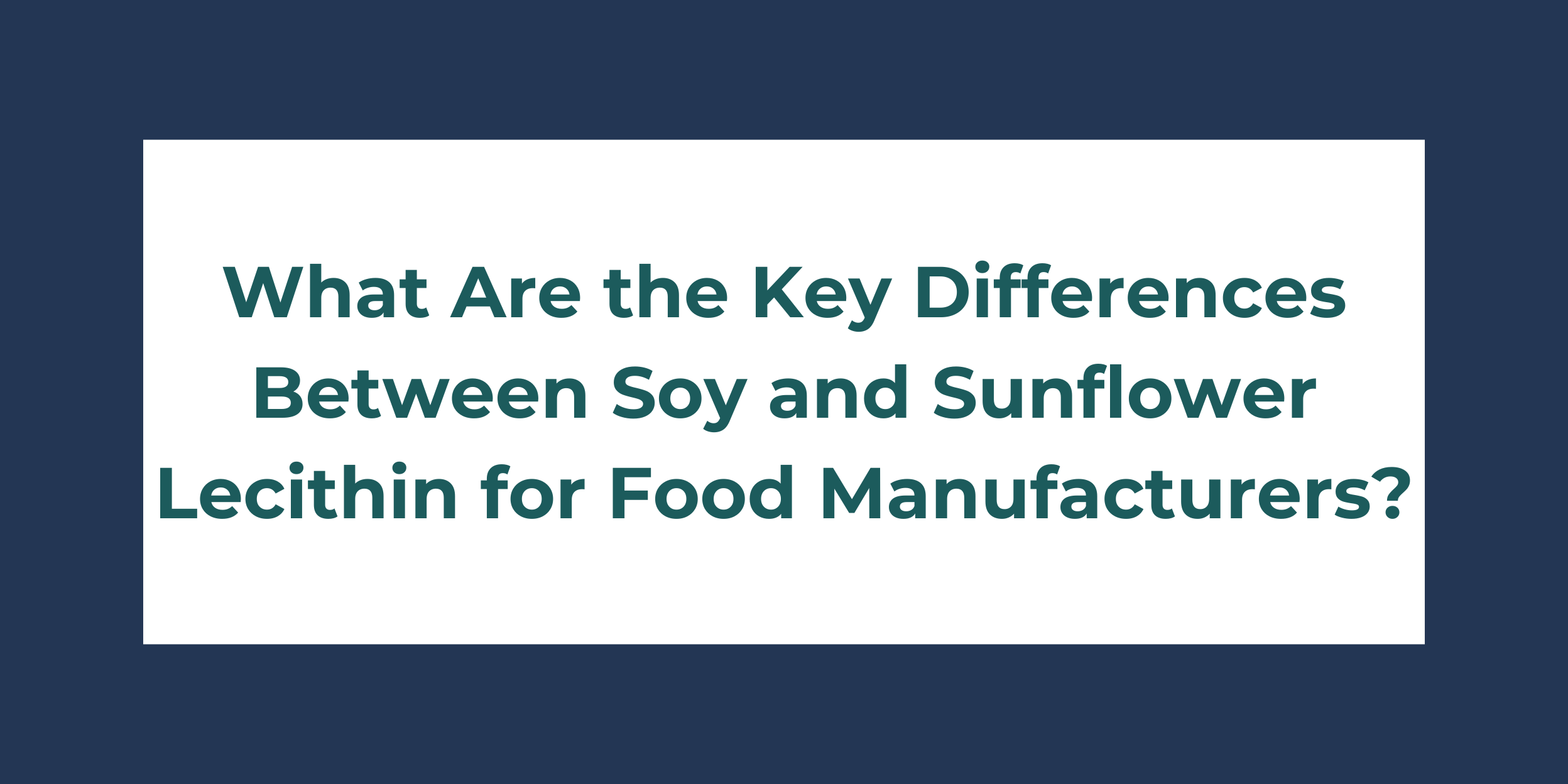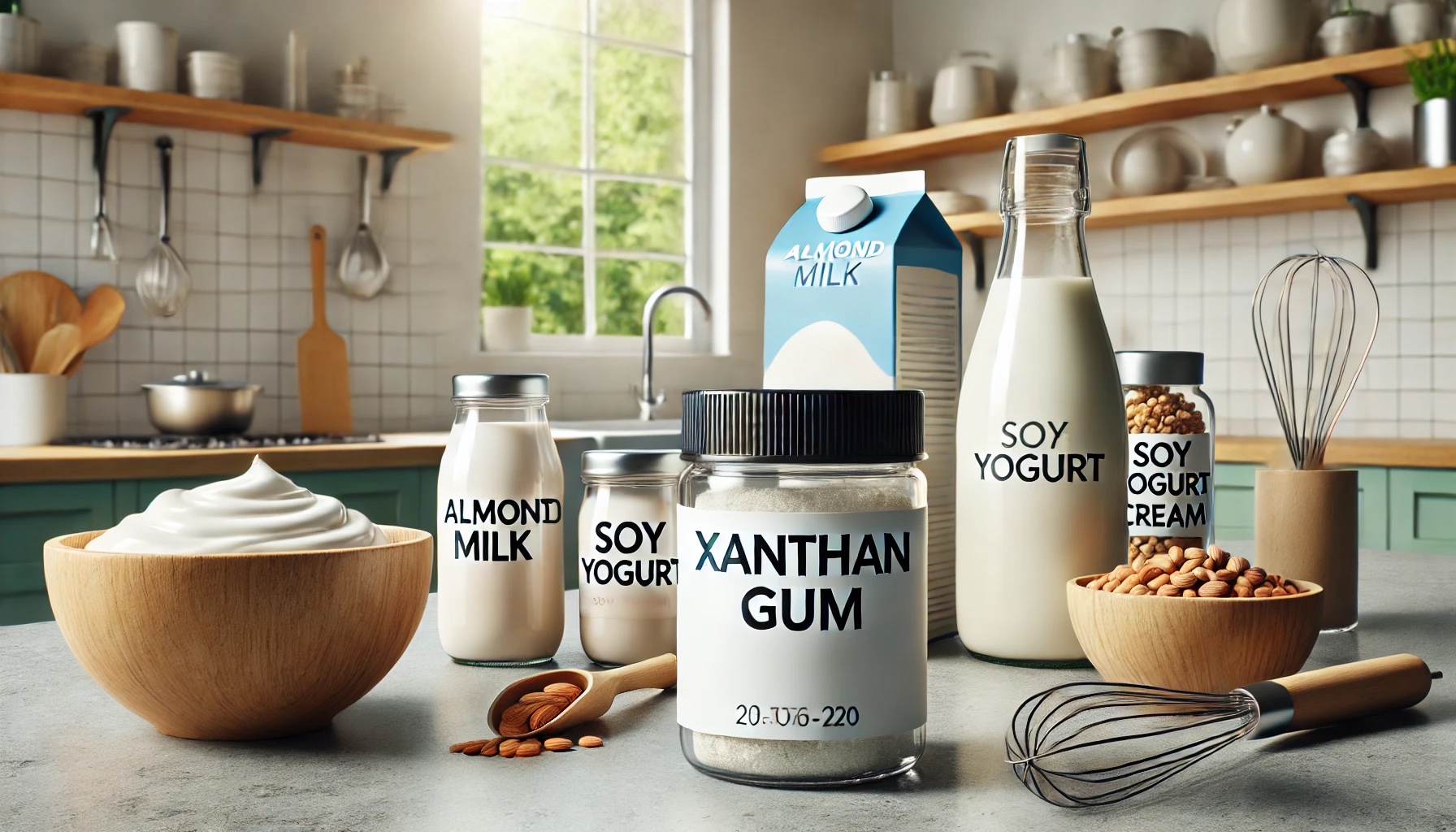Lecithin is a critical emulsifier and stabilizer used in the food industry, with sunflower and soy lecithin being the two most commonly used types. Both ingredients offer essential functional properties but differ in terms of source, processing, and other technical aspects that make them suitable for specific applications. For food manufacturers, understanding these differences can impact ingredient choice, cost, allergen concerns, and product performance.
Below is a detailed analysis of the key differences between sunflower and soy lecithin, segmented into technical factors that food manufacturers must consider.
1. What Are the Sources of Soy and Sunflower Lecithin?
- Sunflower Lecithin: Derived from sunflower seeds (Helianthus annuus), sunflower lecithin is a natural byproduct obtained during the processing of sunflower oil. It is usually extracted via cold pressing, which retains more nutrients and bioactive compounds. Sunflower lecithin is preferred for non-GMO, allergen-free, and organic product labels.
- Soy Lecithin: Extracted from soybeans (Glycine max), soy lecithin is produced as a byproduct of the soybean oil refining process. It’s extracted either via chemical solvent extraction or mechanical pressing. Due to the widespread cultivation of genetically modified soybeans, soy lecithin is often derived from GM crops, though non-GMO options are available at a premium.
2. What Is the Allergen Profile for Each Type?
- Sunflower Lecithin: One of the main advantages of sunflower lecithin is that it is allergen-free. As sunflowers are not classified as one of the top allergens, it is safe for individuals with allergies to soy, dairy, or gluten. This makes sunflower lecithin highly appealing for allergen-free formulations.
- Soy Lecithin: Soy is one of the top 8 allergens, and soy lecithin is derived from soybeans. Although lecithin is highly processed and generally free from proteins that trigger allergic reactions, trace amounts can still remain, making it unsuitable for some individuals with soy allergies. Food manufacturers producing allergen-free products often avoid soy lecithin due to this risk.
3. How Does Extraction and Processing Differ Between Sunflower and Soy Lecithin?
- Sunflower Lecithin: The extraction process typically involves cold pressing, a mechanical method that doesn’t involve the use of chemical solvents, making it suitable for organic and clean-label products. This method results in a purer lecithin and is seen as more environmentally friendly.
- Soy Lecithin: The extraction of soy lecithin often involves the use of hexane, a chemical solvent, during the process of soybean oil refining. Some manufacturers opt for mechanical pressing, but this is less common and more expensive. The chemical extraction method is less preferred for clean-label products, and there may be traces of the solvent left in the final product.
4. What Are the Functional Properties of Sunflower and Soy Lecithin in Food Applications?
- Emulsification Properties:
- Sunflower Lecithin: Sunflower lecithin has excellent emulsifying properties, helping stabilize fat-in-water or water-in-fat emulsions. It is particularly effective in stabilizing products like chocolates, margarine, and bakery items. However, the structure of sunflower lecithin (with a slightly higher content of polyunsaturated fats) may affect emulsification strength slightly compared to soy lecithin.
- Soy Lecithin: Soy lecithin is a well-established emulsifier, offering superior emulsifying properties due to its phospholipid composition, especially phosphatidylcholine. It is commonly used in a wide range of applications including margarine, chocolate, bakery products, and instant foods. It has a slight edge in high-fat emulsification, making it a better choice for some fat-heavy products.
- Hydrophilic and Lipophilic Balance (HLB):
- Sunflower Lecithin: With a lower phosphatidylcholine content, sunflower lecithin tends to have a slightly higher Hydrophilic-Lipophilic Balance (HLB) compared to soy lecithin. This makes it more suitable for water-in-fat emulsions like margarine, sauces, and spreads.
- Soy Lecithin: Soy lecithin has a balanced HLB value, making it versatile for a variety of emulsions, including both oil-in-water and water-in-oil systems. Its slightly lower HLB makes it more suited for applications like chocolate and confectionery, where stable emulsions are crucial.
5. How Do Nutritional Profiles Compare?
- Sunflower Lecithin: Rich in phospholipids, sunflower lecithin is also a source of essential fatty acids like linoleic acid, a polyunsaturated fat. It is regarded as a healthier option due to its higher proportion of unsaturated fats and is often marketed in dietary supplements for cognitive and liver health.
- Soy Lecithin: While also rich in phospholipids, soy lecithin contains higher amounts of phosphatidylcholine, an essential compound for cellular function. However, soy lecithin is generally higher in saturated fats compared to sunflower lecithin. Additionally, soy lecithin contains small amounts of isoflavones, which are plant compounds linked to health benefits, but can also cause concerns for individuals sensitive to phytoestrogens.
6. How Do Regulatory and Labeling Considerations Differ?
- Sunflower Lecithin: Due to its allergen-free status and non-GMO nature, sunflower lecithin is easier to label for organic, GMO-free, and allergen-free claims. It is widely accepted in clean-label products, which are increasingly preferred by health-conscious consumers.
- Soy Lecithin: The allergen status of soy necessitates a “contains soy” label in most regulatory environments, such as the FDA in the United States. Additionally, manufacturers using soy lecithin need to ensure that their products are labeled appropriately if the lecithin is derived from genetically modified crops, unless non-GMO soy lecithin is used.
7. Are There Taste and Texture Implications for Food Products?
- Sunflower Lecithin: Sunflower lecithin tends to impart a more neutral taste, making it suitable for a wide variety of food applications. Its slightly higher polyunsaturated fat content can affect the mouthfeel of fat-rich products like chocolates, potentially resulting in a softer texture.
- Soy Lecithin: Soy lecithin may impart a slightly nutty or earthy flavor, although this is generally mild and can be masked in most products. Due to its stronger emulsifying properties, it may lead to a firmer texture in chocolates and confectioneries, which is often preferred by manufacturers aiming for a specific product consistency.
8. How Does Sustainability Factor Into the Choice Between Sunflower and Soy Lecithin?
- Sunflower Lecithin: Sunflowers require fewer chemical inputs such as fertilizers and pesticides compared to soybeans, making sunflower lecithin the more environmentally sustainable option. Additionally, sunflower lecithin is often produced in regions with strict environmental regulations, ensuring more sustainable farming practices.
- Soy Lecithin: The production of soy lecithin is linked to large-scale industrial agriculture, which is often associated with deforestation, heavy pesticide use, and monoculture farming. The environmental concerns surrounding GMO soybeans further complicate the sustainability of soy lecithin. Non-GMO soy lecithin is available, but it comes at a higher price.
9. How Do Cost and Availability Differ for Food Manufacturers?
- Sunflower Lecithin: While sunflower lecithin is growing in popularity, it tends to be more expensive than soy lecithin due to its more limited supply and specialized extraction process. However, as demand for non-GMO and allergen-free products increases, more manufacturers are investing in sunflower lecithin, potentially driving prices down in the future.
- Soy Lecithin: Soy lecithin is more cost-effective and readily available due to the global scale of soybean production. It is a staple in many food industries, making it easier for manufacturers to source in large quantities. Its lower price point makes it appealing for cost-conscious manufacturers, although this is offset by potential allergen and GMO concerns.
10. Which Applications Are Best Suited for Each Type of Lecithin?
- Sunflower Lecithin: Due to its allergen-free status and neutral flavor, sunflower lecithin is ideal for health-conscious and allergen-free products. It works well in bakery items, margarine, vegan and organic products, and health supplements.
- Soy Lecithin: Soy lecithin is the go-to emulsifier for chocolate, confectioneries, baked goods, and processed foods where emulsification power and cost-effectiveness are priorities. It is also favored in industrial food production due to its strong emulsification capabilities and versatility across various food systems.
Conclusion: Which Lecithin Should Food Manufacturers Choose?
The choice between sunflower and soy lecithin depends on several factors, including allergen status, sustainability, regulatory concerns, cost, and functional properties. Sunflower lecithin is the better choice for clean-label, allergen-free, and GMO-free products, offering a neutral taste and higher unsaturated fat content. On the other hand, soy lecithin is a cost-effective, versatile emulsifier widely available in the food industry, though it comes with concerns around allergens and GMOs.
Manufacturers should weigh these considerations carefully, depending on their product requirements, target market, and production goals.








